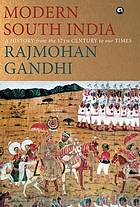Gaining prominence
Despite the many alternatives available today, fortunately we still get to see the tambura player on stage. In fact, the first thing many musicians do after accepting a concert date is to book their preferred tambura player. As more musicians show a renewed interest in the instrument, the tambura is experiencing a resurgence. Paradoxically, though, the number of dedicated artistes playing it is declining. […]
[Eminent violinist] RK Shriramkumar laments the fact that one needs to refer to the instrument as an acoustic tambura to distinguish it from its electronic version. “It’s a tragedy that musicians have brought upon themselves by settling for electronic versions. Just as instrumentalists are expected to bring their own instruments to concerts, vocalists must be instructed to bring tamburas. Students should be encouraged to play the tambura for their gurus on stage to experience the constant give and take.”
Source: “The tambura is back. But where are the players?” by Lakshmi Anand in The Hindu 2 December 2021
Date accessed: 29 June 2022
Carnatic music as experienced today: its social and political context in a nutshell

As the nineteenth century closes and in January 1901 a distant Empress dies, the onlooker recognizes an advance across South India in education, a growing print culture, and an emerging middle class of small landholders, doctors, lawyers, college teachers, writers, government employees and merchants.
In the realm of ideas, the onlooker discerns a few currents. One is of nationalism. Another is for reform in traditional customs and exclusions. A third is of linguistic pride. And a fourth pursues equality among castes.
Rajmohan Gandhi in Modern South India: A History from the 17th Century to Our Times , p. 236
This is a Dravidian story, and also more than that. t is a story involving four centuries, the seventeenth, eighteenth, nineteenth and twentieth, yet other periods intrude upon it… [cover notes]
Information about the persons, items or topics
Research & Custom search engines
The Oxford Illustrated Companion to South Indian Classical Music
Learn & practice more
A brief introduction to Carnatic music (with music examples and interactive map)
Bhava and Rasa explained by V. Premalatha
Free “flow” exercises on this website
Introduction (values in the light of modernity)
Video | Keeping tala with hand gestures: Adi (8 beats) & Misra chapu (7 beats)
Why Carnatic Music Matters More Than Ever
Worldcat.org book and journal search (including Open Access)